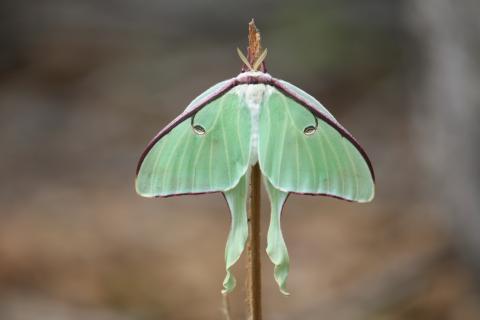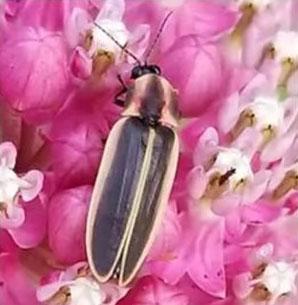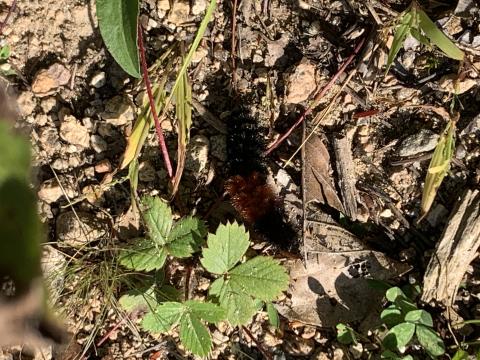Leaving the Leaves
Fall is my favorite time of year. Crisp, clear blue skies, beautiful fall foliage, and relatively few stinging insects! So, let’s talk about all those wonderful leaves. They are gorgeous when the sun hits them and illuminates the season’s palette of reds, oranges, and yellows. People travel from all over the world to see our leaves. And then what? They fade and fall. They blanket your lawn, congregating in wind-blown piles along fences and hedgerows and burying your lawn furniture. Something must be done!
Each year, a mature hardwood forest produces an estimated 2,000 -3,000 pounds of litter per acre, and most of that litter is in the form of leaves. These leaves protect the soil beneath them, creating a protective layer that conserves soil moisture and regulates temperature fluctuations. Fallen leaves provide places where various insects, fungi, and microorganisms can thrive. These creatures, in turn, form the base of the food chain for many birds, mammals, and amphibians.
Leaves also help reduce erosion by absorbing the impact of raindrops. As the leaves break down, they add organic matter to the soil, enhancing soil structure, improving aeration, and providing nutrients for future plant growth.
While we don’t typically pay a lot of attention to the leaves in the forest – we pay a lot of attention to the leaves in our yards. Raking, blowing, shredding, and removing them in our effort to tidy things up before winter.
Over the past few years, I have been trying to reduce the size of my lawn and include patches of wildflowers, fruiting shrubs, and other plants to increase diversity. I still have quite a bit of lawn for sitting and enjoying, but that leads me to the dilemma of what to do with all of the leaves that fall on the lawn.
When we rake up and remove leaves, or shred them, we are removing important habitat and reducing the ability of certain insect species to survive the winter. When we think about the insects we find here in New Hampshire, they all have to get through the winter somehow. They may overwinter as eggs, larvae (or caterpillars), pupae, or adults, and oftentimes, the leaf litter in our yards and forests provides shelter and protection for these insects.
For example, the end of the school year reminds me to start looking for luna moths (Actias luna). These large, beautiful green moths make their appearance at my home in late June. The caterpillars of these moths feed on a variety of different tree species, and white birch seems to be a favorite. (Some other plants they like include walnut, hickory, sumac, and alder). As fall approaches, these caterpillars pupate in cocoons woven among the fallen leaves and soil. Because white birch trees thrive in the sun, most of the white birches near my home are along the edge of the lawn. If I were to rake up and remove (or shred) these leaves, I would remove or destroy these pupating insects. Then I would miss the joy of seeing the moths themselves in the spring.

Luna moth. Photo by Wendy Scribner.
Instead, I try to rake the leaves from my lawn area and put them into my garden beds, or I drag them back into the woods to allow the insects to overwinter and emerge next spring. Another option is to designate an area where you can collect your leaves (off the lawn and out of sight) to let them decompose (a wire fence can keep them from blowing back into your yard).
Another group of insects that overwinters as larvae in leaf litter, under decaying logs, and in moist areas are fireflies. At my house, I always notice these insects around the 4th of July.

Firefly. Photo by UNH Extension.
According to the Xerces Society, habitat degradation and loss, light pollution, pesticide use, and climate change are some of the many threats facing fireflies. We can help by allowing parts of our yards to grow wild (some fireflies will use taller grasses as perching sites), letting leaves accumulate in these wild patches, limiting and avoiding pesticide use, and turning off our outdoor lights whenever possible during the summer firefly season.
Lastly, folklore tells us that one of our most recognizable caterpillars – the woolly bear – can help us predict the severity of the coming winter. While research does not support this, the belief was that the size of the brown stripe on woolly bear caterpillars would foretell what kind of winter we would have. If the caterpillars have wide rusty-brown bands on their midsections, then we will have a mild winter. Conversely, if the rusty band is relatively narrow, and the caterpillar is mostly black, then we will have a more severe winter.

Woolly bear caterpillar. Photo by Wendy Scribner.
We see these charismatic black and brown caterpillars moving across the landscape in the fall looking for overwintering sites. They are immature Isabella tiger moths (Pyrrharctia isabella). These intrepid individuals seek out sheltered areas under logs, rocks, and leaf piles, and nestled under bark, where they can overwinter. According to the National Weather Service, once they find suitable protected spots, these caterpillars produce a natural organic antifreeze called glycerol. Then they freeze bit by bit until everything except their interior cells are frozen. Apparently, woolly bears can survive to temperatures as low as -90°. These caterpillars are even celebrated in Vermilion, Ohio with an annual Woolly Bear Festival every fall!
By leaving the leaves, or piling them on flower beds, or in unused corners of your property, you can help these species and many other species survive.
This fall, as you contemplate the mountain of leaves on your property, please think about how you can enhance and protect the soil and accommodate some of these often-overlooked creatures by strategically granting some of your leaves a reprieve to stay in parts of your property.
By paying attention to how some of our fellow creatures are preparing to get through the winter, and taking steps to accommodate them where possible, we can be better neighbors.


